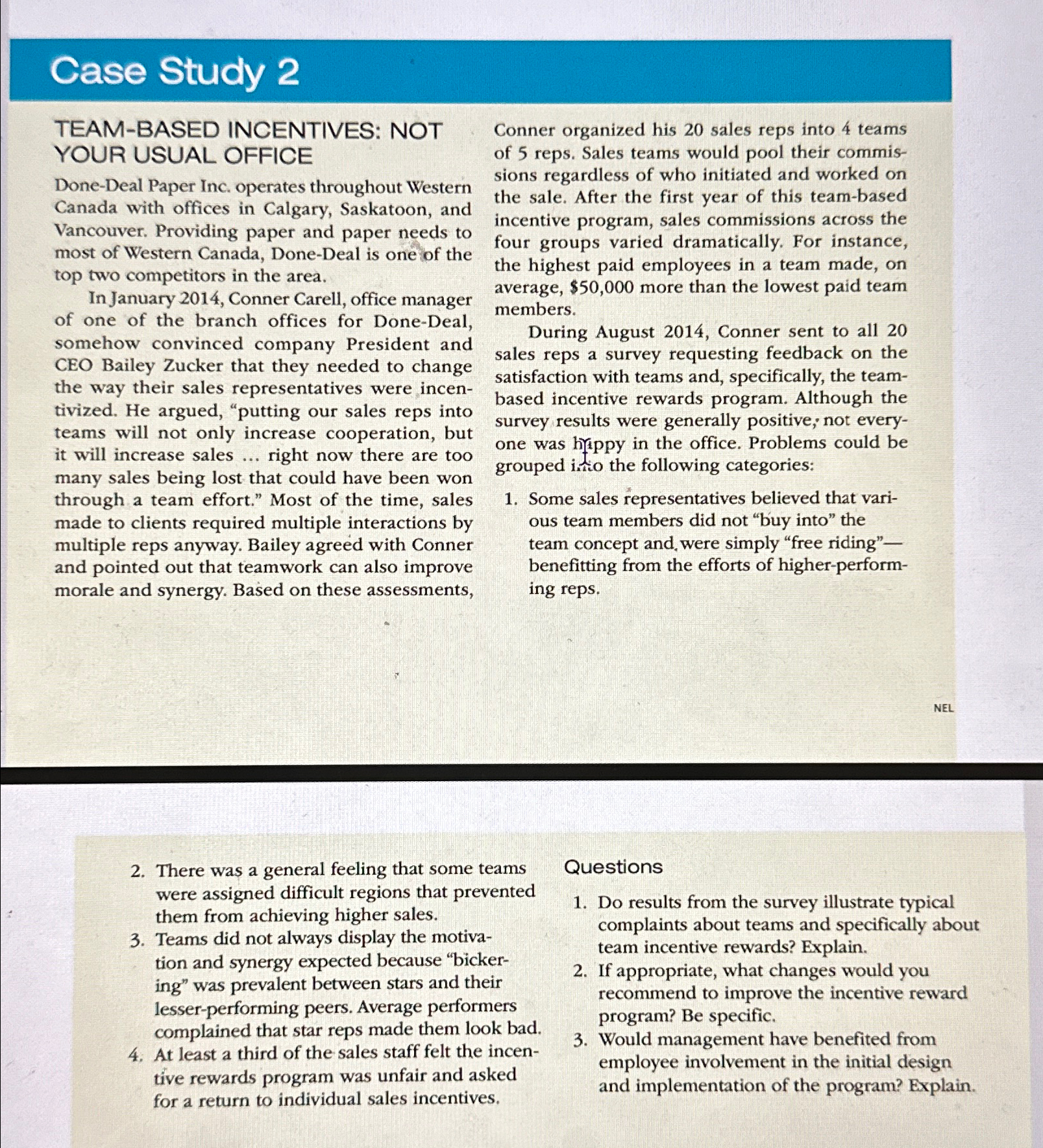Answered step by step
Verified Expert Solution
Question
1 Approved Answer
Case Study 2 TEAM - BASED INCENTIVES: NOT YOUR USUAL OFFICE Done - Deal Paper Inc. operates throughout Western Canada with offices in Calgary, Saskatoon,
Case Study
TEAMBASED INCENTIVES: NOT YOUR USUAL OFFICE
DoneDeal Paper Inc. operates throughout Western Canada with offices in Calgary, Saskatoon, and Vancouver. Providing paper and paper needs to most of Western Canada, DoneDeal is one of the top two competitors in the area.
In January Conner Carell, office manager of one of the branch offices for DoneDeal, somehow convinced company President and CEO Bailey Zucker that they needed to change the way their sales representatives were incentivized. He argued, "putting our sales reps into teams will not only increase cooperation, but it will increase sales right now there are too many sales being lost that could have been won through a team effort." Most of the time, sales made to clients required multiple interactions by multiple reps anyway. Bailey agreed with Conner and pointed out that teamwork can also improve morale and synergy. Based on these assessments,
Conner organized his sales reps into teams of reps. Sales teams would pool their commissions regardless of who initiated and worked on the sale. After the first year of this teambased incentive program, sales commissions across the four groups varied dramatically. For instance, the highest paid employees in a team made, on average, $ more than the lowest paid team members.
During August Conner sent to all sales reps a survey requesting feedback on the satisfaction with teams and, specifically, the teambased incentive rewards program. Although the survey results were generally positive, not everyone was hippy in the office. Problems could be grouped itio the following categories:
Some sales representatives believed that various team members did not "buy into" the team concept and, were simply "free riding"benefitting from the efforts of higherperforming reps.
NEL
There was a general feeling that some teams were assigned difficult regions that prevented them from achieving higher sales.
Teams did not always display the motivation and synergy expected because "bickering" was prevalent between stars and their lesserperforming peers. Average performers complained that star reps made them look bad.
At least a third of the sales staff felt the incentive rewards program was unfair and asked for a return to individual sales incentives.
Questions
Do results from the survey illustrate typical complaints about teams and specifically about team incentive rewards? Explain.
If appropriate, what changes would you recommend to improve the incentive reward program? Be specific.
Would management have benefited from employee involvement in the initial design and implementation of the program? Explain.

Step by Step Solution
There are 3 Steps involved in it
Step: 1

Get Instant Access to Expert-Tailored Solutions
See step-by-step solutions with expert insights and AI powered tools for academic success
Step: 2

Step: 3

Ace Your Homework with AI
Get the answers you need in no time with our AI-driven, step-by-step assistance
Get Started


